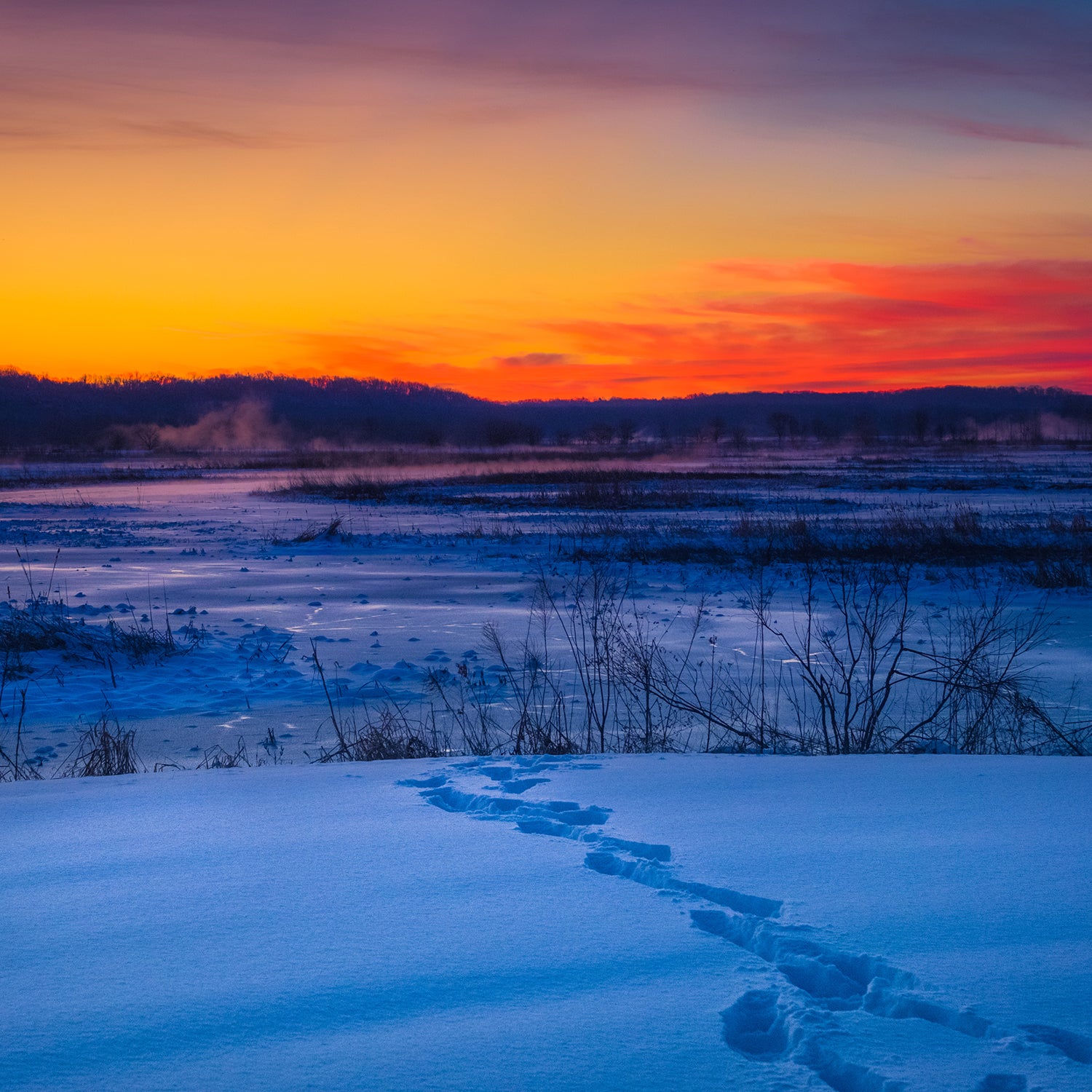It’s your boots, not your socks, that provide insulation when you’re hiking. The reason for this is simple, but holds the ability to utterly transform your comfort when it’s cold out. Not only do your weight and movement compress socks as you wear them, but the outright level of insulation provided by even the thickest pair of socks falls far behind the layers you wear on other parts of your body. And given that your feet often lack much fat insulation and are at the extreme end of your body, as far away from your heart as body parts get, they need as much help as possible.
Go find your thickest pair of socks. I’ll wait. Now lay them down next to all the layers you plan to wear on your upper half today. If you’re anything like me, that’s going to be a thin base layer, a breathable synthetic mid-layer, a puffy jacket, and a windproof shell. I’m going to bet your socks might be as thick as your mid-layer alone. So, how are your feet going to be as warm as the rest of your body?
Not all boot insulations are created equally. It’s common to see winter boots designed for casual wear insulated by synthetic fleece, or even cotton flannel. Because both materials are also easily subject to compression, the outright warmth they provide will be limited. And, of course, cotton is capable of absorbing and holding onto up to in water, making it the worst possible material to wear outdoors.
A step up is felted wool, which you might be familiar with from pac-style boots. This dense mat of boiled wool fibers strongly resists compression and provides insulation across a versatile range of conditions, aided by wool’s naturally thermo-regulating, odor-fighting properties. But there are a few downsides. Felted wool is heavy and bulky, and the level of insulation it provides per weight and size isn’t great. Wool is also capable of absorbing up to 30 percent of its weight in water. Step into an unexpectedly deep puddle or stream, and wool-insulated boots will instantly absorb a bunch more weight, and take forever to dry out. That’s why most felted wool insulated are made in removable bootie form, so you can pull those out of the shell every night to dry them out by your fire.
Enter synthetic insulation. In quality boots, you’re typically going to see Thinsulate or Primaloft varieties. Both provide more insulation in a slimmer, lighter material than felted wool, and neither hangs on to water. Lighter, less bulky footwear will be easier to walk in, and warmer, dryer boots will keep your feet cozy as you put in those miles.
The warmth of lofted synthetic insulation is measured in density—grams per square meter. It’s worth noting that a pair of boots may not actually contain a full square meter of insulation material, so this number does not directly correspond with the outright weight of a boot.
A pair of hiking boots containing a 200-gram synthetic insulation will provide a versatile amount of insulation, equivalent warmth to, say, a hefty parka. I wear in conditions ranging from as warm as 40 degrees, all the way down to sub-zero conditions. As I’m active, my feet stay warm.
The next step up is 400 grams. These boots will be very warm, likely too warm to actively hike in at temperatures warmer than the teens.
From there, things get more specialized. When conditions are extremely cold, and my active time outside is limited (or in less frigid weather when I’m not active) I’ll reach for . Paired with a set of chemical toe warmers, my feet do not get cold. Skiing? . For an upcoming trip to Kodiak Island in May, my wife and I both grabbed . Temperatures will only be in the thirties and forties, but we’ll be in and out of the freezing water all day long, and water is far more thermally conductive than air.
Regardless of the season or temperature, I tend to wear the same type of thin, merino wool socks in my boots. Go back to that idea of layering for your feet just like you do the rest of your body. A thin merino sock is your base layer. The heavy insulation then provides warmth, while the boot’s shell keeps weather, or the Prince William Sound, away from your feet.
Any of the insulation approaches we’re describing here should wrap around your entire foot. But there are two main vectors by which the cold may seep in: convection and conduction. Just like your oven, convective heat loss is caused by exposure to cold air. Air is a poor conductor, so is easily defended against. Your boot’s leather or synthetic outer will stop wind from ripping warm air out of the insulation inside. Conductive heat loss is trickier, because contact with an extremely cold surface, like ice, may suck heat out through a boot’s sole. Fortunately, there is one more tool in your arsenal: insoles. I stick a pair of in any boot I plan to wear when it’s cold out, and never have to worry about what surface I’m standing on.


